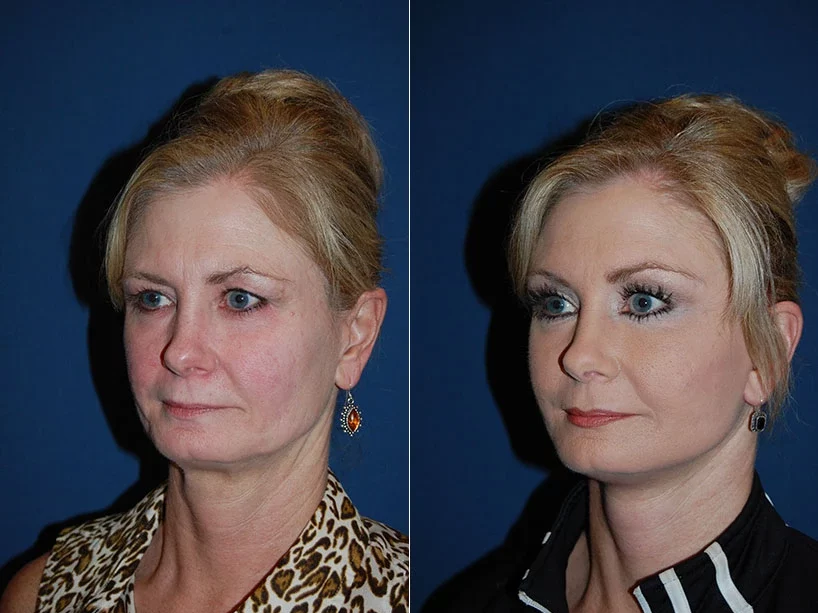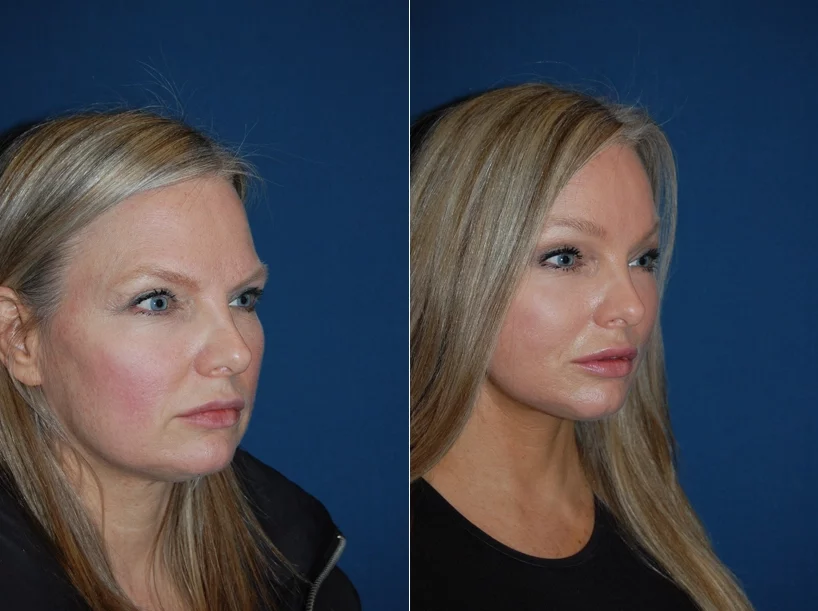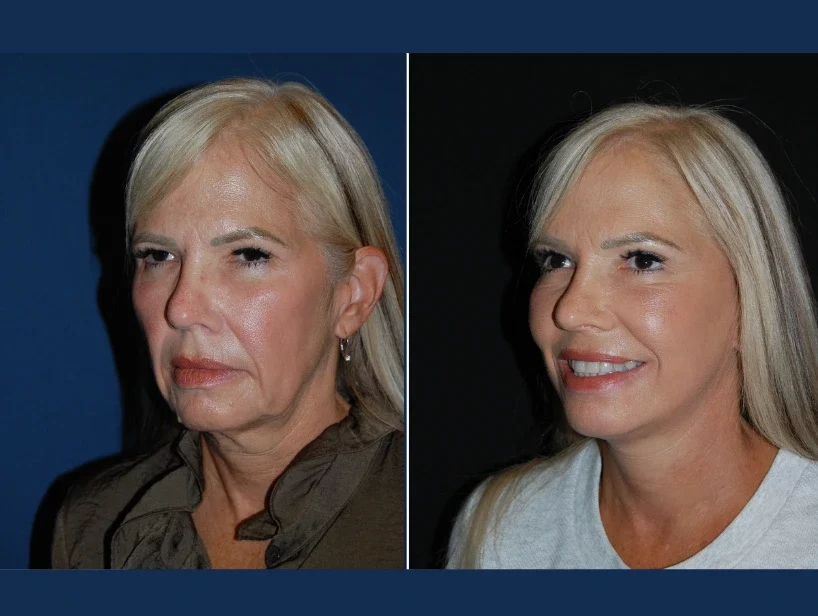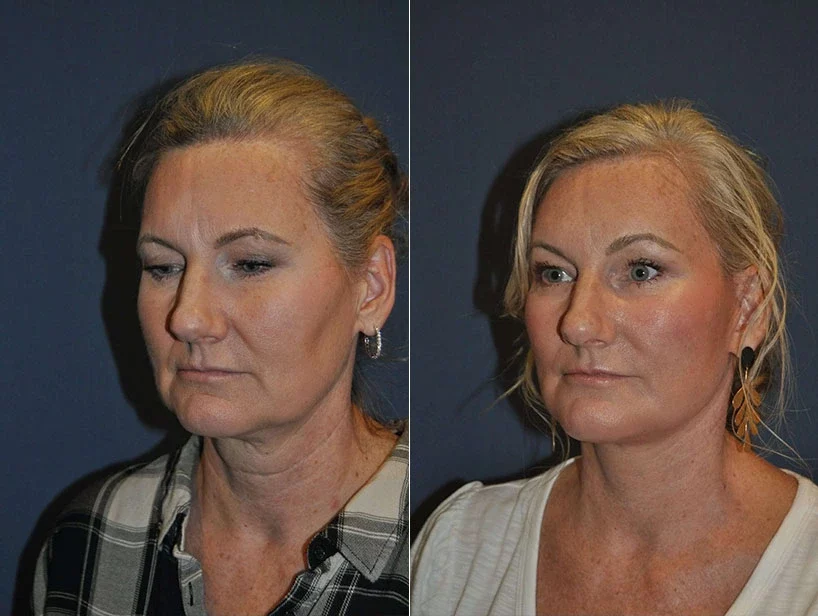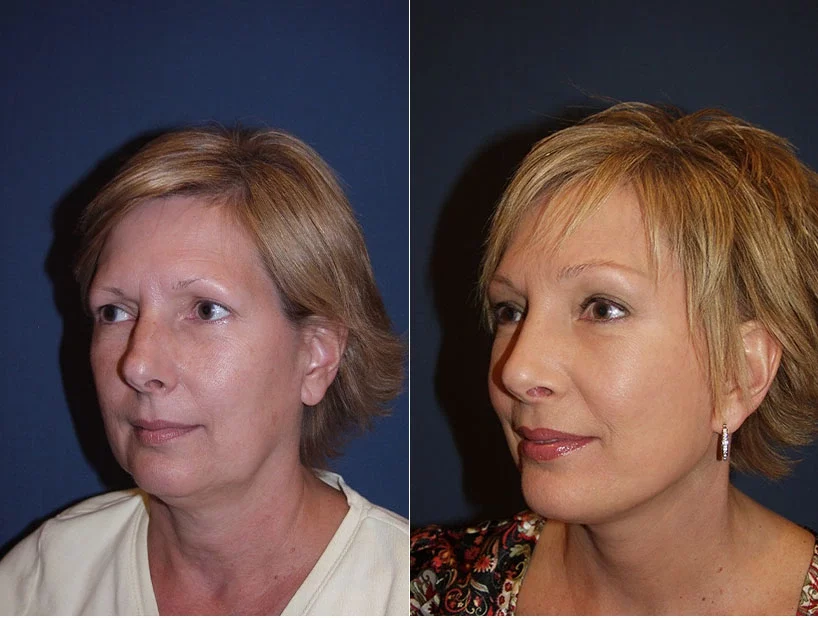Is a Facelift Painful?
A facelift is generally not considered painful during the procedure itself, thanks to the use of anesthesia. However, some discomfort, tightness, and mild pain are common during the initial recovery period. Most patients describe the pain after a facelift as manageable, with sensations ranging from mild soreness to moderate aching in the first few days, and report that it steadily improves with proper aftercare and pain management.
Before diving into the specific aspects of facelift pain, it’s helpful to set realistic expectations and understand the factors that can influence your experience. Whether you’re considering a facelift or another procedure, knowing what to expect can help you prepare for a smoother recovery.

Home » Is a Facelift Painful?
Understanding Facelift Pain
The facelift surgery itself is performed under anesthesia, so you will NOT feel pain during the procedure. After the anesthesia wears off, it is normal to experience some discomfort, which can include a sensation of tightness, swelling, and mild to moderate pain. This is a natural part of the body’s healing response.
Discomfort During Initial Facelift Recovery
The initial discomfort is often most noticeable in the first few days after surgery. However, with modern surgical techniques and advances in pain management, most patients find the pain after facelift surgery to be tolerable and short-lived.
Pain perception is highly individual, but most patients describe the immediate post-surgical pain as less intense than expected. Rather than sharp or severe pain, the sensation is often more like deep bruising, tightness, or tenderness along the incision lines and jawline. Thus, the question of “how painful is a facelift?” can be answered by saying that, for the majority, it is less painful than other major surgeries and is well controlled with prescribed medication.
Upon waking from anesthesia, you may feel tightness or mild aching in your cheeks, jaw, and neck. Some patients report a sensation of pressure or fullness due to post-surgical swelling. Prescription pain medications provided by Dr. Sean Freeman are typically effective at controlling this discomfort in the first 48 to 72 hours. The most significant discomfort usually peaks within the first two days and then begins to subside.
After the First Week
As you move through the first week of recovery, pain levels generally decrease. Many patients transition from prescription pain relievers to over-the-counter options within a few days. Bruising, swelling, and a mild feeling of tightness may persist, but sharp pain should be rare. By the end of the first or second week, most report only minor tenderness or numbness, especially around incision sites.
Factors That Affect Pain After Facelift Surgery
Several factors can influence your comfort and recovery experience after a facelift:
Surgical Technique and Procedure Type
The extent of pain after a facelift often depends on the surgical technique used. Less invasive approaches, such as a mini facelift, may involve less tissue manipulation and smaller incisions, resulting in less discomfort. More comprehensive procedures, such as a deep plane facelift, may involve a longer recovery but are typically not described as severely painful.
Individual Pain Tolerance and Health
Everyone experiences pain differently. Your personal pain threshold, overall health, and history with other surgeries can influence how you perceive and manage post-facelift discomfort. Being in good health, not smoking, and closely following aftercare instructions can all contribute to a smoother and more comfortable recovery.
Extent of Surgery and Other Procedures
The more extensive the facelift and the more facial areas involved (such as combining with a neck lift, eyelid surgery, or brow lift), the greater the likelihood of increased swelling and mild discomfort. However, even with combined procedures, pain is generally not described as severe.
Pain Management After a Facial Plastic Surgery
Effective pain management is key to a comfortable recovery. Dr. Sean Freeman will provide specific recommendations tailored to your needs, but the following are common strategies:
Prescription Pain Medication
For the first few days after your facelift, you may need to take prescription pain medications to manage discomfort. These medications are typically most potent during the initial 48-72 hours after surgery and are gradually tapered off as your pain decreases.
Over-the-Counter Pain Relief
As pain levels diminish, many patients switch to over-the-counter medications such as acetaminophen. Always follow the dosing instructions provided by your surgeon to avoid potential side effects and drug interactions.
Cold Compresses
Applying cold packs to the surgical area (without placing them directly on the skin) can help reduce swelling and numb minor pain. This technique is especially helpful in the first 48 hours of recovery.
Head Elevation
Keeping your head elevated, even while sleeping, can minimize swelling and discomfort. Extra pillows or a wedge pillow can help maintain the proper position and support healing.
Rest and Gentle Facial Movements
Rest is one of the most effective ways to support healing and pain reduction. Avoid strenuous activity and excessive facial movements in the first week. Gentle jaw movements—such as talking softly and eating soft foods—can help maintain circulation and flexibility without straining healing tissues.
Avoiding Heavy Lifting
After a facelift procedure, it’s essential to avoid heavy lifting as part of your pain management plan. Lifting heavy objects can increase blood pressure and strain the healing tissues, potentially worsening post-surgical discomfort or swelling. If your facelift was combined with a neck lift or brow lift, avoiding physical strain becomes even more critical to ensure optimal results and reduce the risk of complications. Heavy lifting and bending can cause you to feel tight in the areas where sagging skin was corrected, potentially delaying your return to a more youthful appearance. For the first two weeks following general anesthesia, you should focus on light activities only and avoid bending or lifting altogether. Other factors, such as your individual healing pace and adherence to aftercare instructions, will also impact your comfort level and overall recovery experience.
Do Patients Experience More Pain After a Deep Plane Facelift?
The deep plane facelift is a more advanced surgical procedure that targets not only excess skin but also the underlying tissues for comprehensive facial rejuvenation. Because it involves repositioning deeper structures, some patients assume it may lead to more pain. However, discomfort after this facelift varies depending on the individual, the extent of correction needed, and how the body responds to the healing process.
While there may be more residual swelling with a deep plane technique compared to less invasive methods, many patients do not report significantly greater pain. Our plastic surgeon takes steps to minimize discomfort through careful surgical planning and proper applications of post-operative care, such as cold compresses, head elevation, and prescription pain medication. It’s also essential to avoid sun exposure during recovery, especially around the lower scalp and incision sites, to reduce irritation and support healing.
The initial recovery time can extend over several weeks, and some patients may be advised to temporarily discontinue blood thinners (only after clearance from the prescribing physician) to reduce the risk of bruising or hematoma. To prevent infection, you’ll likely be instructed to apply antibiotic ointment as part of your routine care. Following your surgeon’s aftercare instructions closely is essential to ensure a smooth recovery and long-lasting results after a full facelift.
How Can Facelift Patients Spot Signs of Complications?
Effective pain management involves more than medication. Consider these strategies to minimize discomfort, support a smooth recovery, and avoid complications:
Following Post-Operative Instructions
Strictly adhering to Dr. Sean Freeman’s post-operative instructions is crucial. This may include guidance on wound care, medication schedules, activity restrictions, and signs of abnormal pain or swelling.
When to Contact Your Surgeon
While mild discomfort, bruising, and swelling are expected, please get in touch with your surgeon promptly if you experience severe pain, sudden swelling, or any other concerning symptoms. Early communication can help address any issues before they escalate and provide reassurance during your recovery process.
Dr. Sean Freeman
JULY 31, 2025
Conclusion
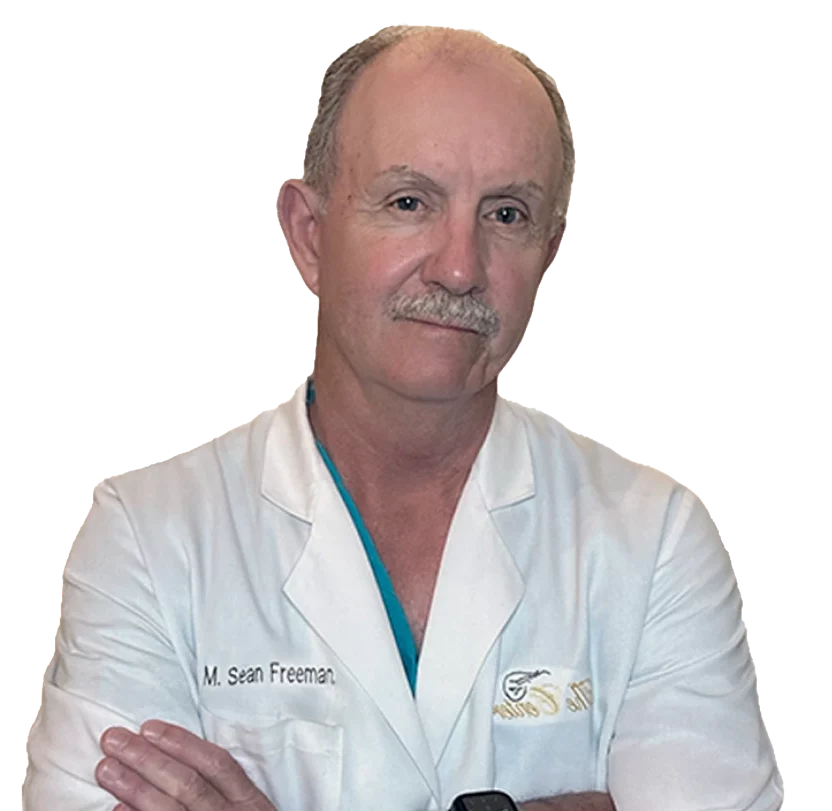
Why Expertise Matters in Deep Plane Facelifts
The deep plane facelift is a more advanced technique but also more demanding. It works beneath the surface to lift and reposition the deeper facial layers, delivering longer-lasting, more natural results.
Dr. Sean Freeman has been performing deep plane facelifts for over 20 years, long before it became the media’s favorite buzzword. His depth of experience means each procedure is done with precision, safety, and aesthetic sensitivity refining natural features, not distorting them.
In facial plastic surgery, the technique matters but the surgeon matters more.
